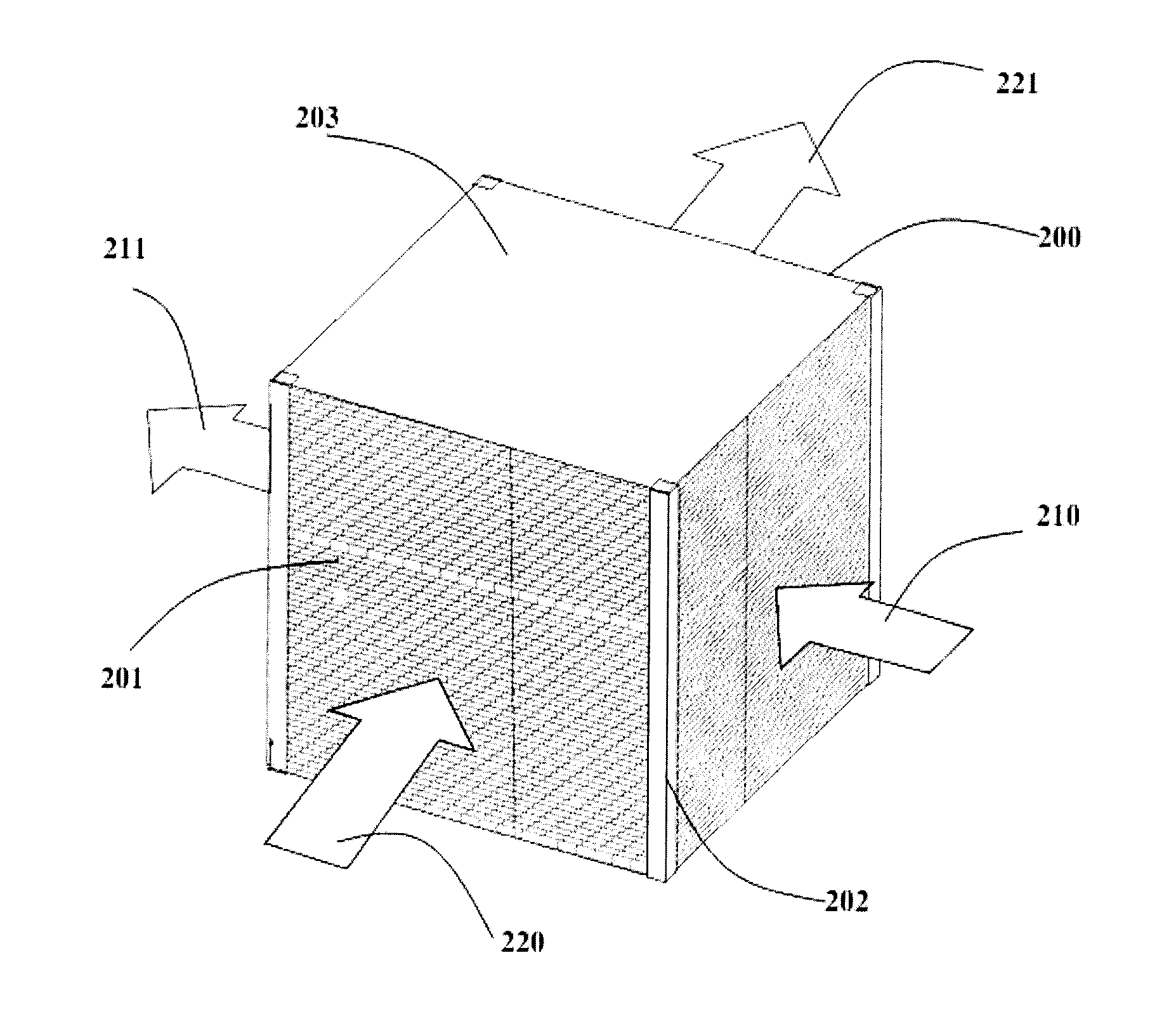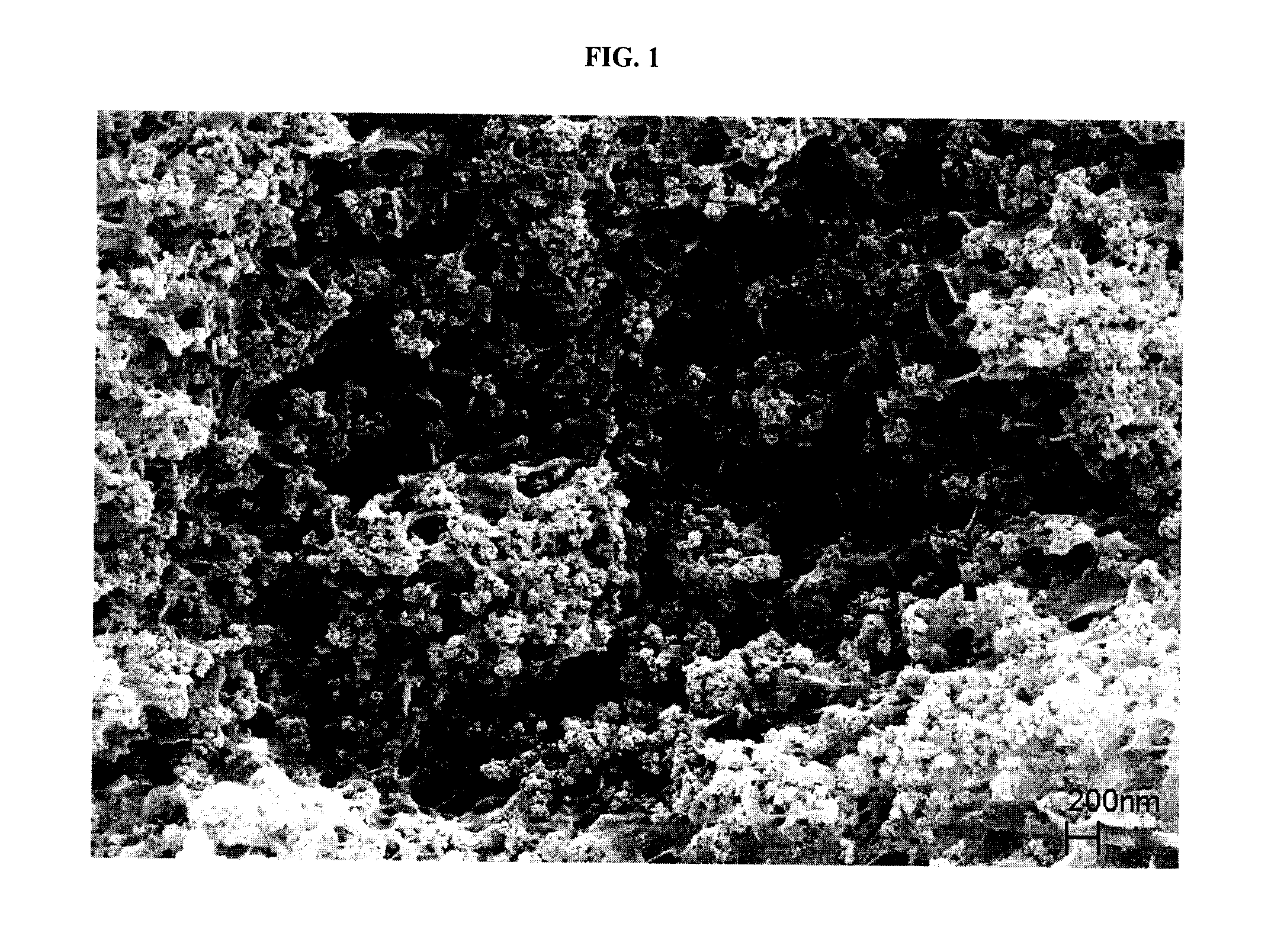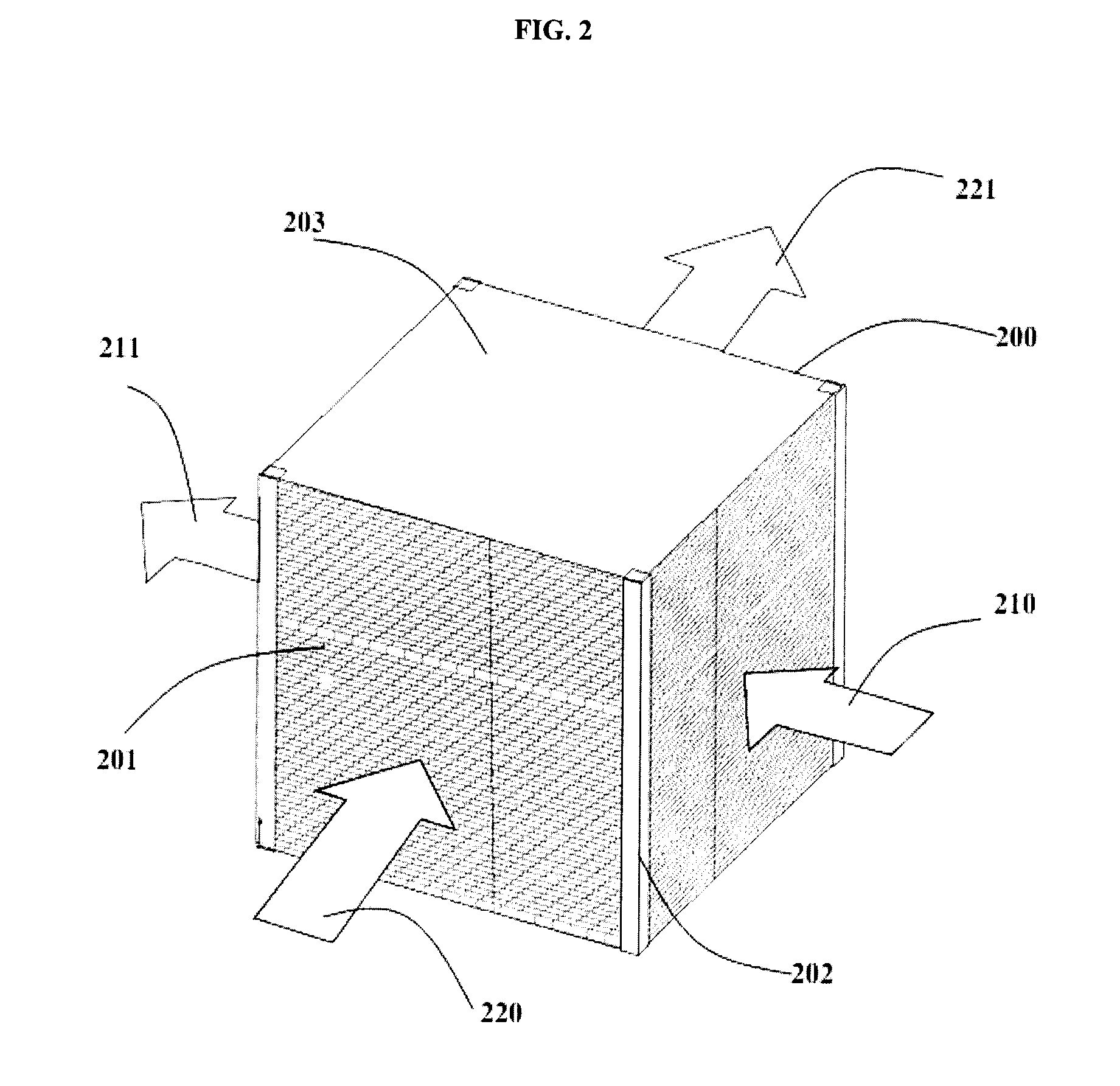Coated membranes for enthalpy exchange and other applications
a technology of enthalpy exchange and coating membrane, applied in the field of membranes, can solve the problems of waste of useable energy, sickness, absenteeism and productivity loss, energy waste, etc., and achieve the effects of reducing coating loading, reducing coating thickness or weight, and reducing water flux
- Summary
- Abstract
- Description
- Claims
- Application Information
AI Technical Summary
Problems solved by technology
Method used
Image
Examples
experimental examples
[0075]Examples 2-5 and 8-12 describe the preparation of various embodiments of coated membranes that comprise a desiccant-loaded polymer substrate with a water permeable polymer coating on one surface thereof. These examples, along with Example 13, also illustrate some of the properties and results that can be obtained with such membranes. The experiments described in Examples 2-5, and 8-13 were intended to explore the effect that the nature of the porous substrate, the coating and optional additives can have on the properties of the final membrane. The preparation and testing of other types of membranes are also described for comparison purposes (see Examples 1, 6-7).
example 1
An Uncoated Substrate
[0076]A silica-filled polyethylene sheet material was obtained from Daramic. The material is sold commercially as a flat sheet battery separator, and is a microporous material consisting of silica-filled polyethylene. The material had a silica-to-polyethylene ratio of 2.6 to 1, or about 72% silica by weight, a thickness of 178 micron, a porosity of 58%, and an average pore size of about 0.2 micron. The substrate material was tested for water permeation, air permeation, exhaust air transport ratio (EATR), and flame resistance, using techniques described below. The results obtained for the uncoated substrate are shown in Table 1 below. The uncoated substrate had a desirable water flux of 24.3+ / −1.2 kg / m2 / day, However, the air crossover rate was too high for most ERV applications and the Exhaust Air Transport Ratio (EATR) and burn rate were not suitable for most ERV applications. The EATR provides an indication of the amount of contaminant gas that may pass through...
example 2
A PVA-Coated Substrate
[0077]Water and polyvinyl alcohol (PVA) polymer (85000-124000 MW from Sigma Aldrich) were heated and mixed to form a 4% solution by weight. A 4% aqueous solution of boric acid was added to the polymer solution in a ratio of 1:4 by weight in order to cross-link the PVA polymer. A thin coating of the aqueous PVA / boric acid solution was applied to one surface of the same substrate material used in Example 1 using a Mayer rod coater. The coating loading of the PVA was 3.6 g / m2. The PVA-coated substrate was tested for water permeation and air permeation, in substantially the same way as in Example 1. The results for this PVA-coated substrate are also shown in Table 1 below. The air crossover was reduced to 10 cm3 / min but the water flux was found to be 8.8 kg / m2 / day which is much lower than for the uncoated substrate in Example 1, and probably too low for high performance ERV applications. The coated substrate was rather brittle and difficult to pleat, handle, and ro...
PUM
| Property | Measurement | Unit |
|---|---|---|
| porosity | aaaaa | aaaaa |
| thickness | aaaaa | aaaaa |
| thickness | aaaaa | aaaaa |
Abstract
Description
Claims
Application Information
 Login to View More
Login to View More - R&D
- Intellectual Property
- Life Sciences
- Materials
- Tech Scout
- Unparalleled Data Quality
- Higher Quality Content
- 60% Fewer Hallucinations
Browse by: Latest US Patents, China's latest patents, Technical Efficacy Thesaurus, Application Domain, Technology Topic, Popular Technical Reports.
© 2025 PatSnap. All rights reserved.Legal|Privacy policy|Modern Slavery Act Transparency Statement|Sitemap|About US| Contact US: help@patsnap.com



